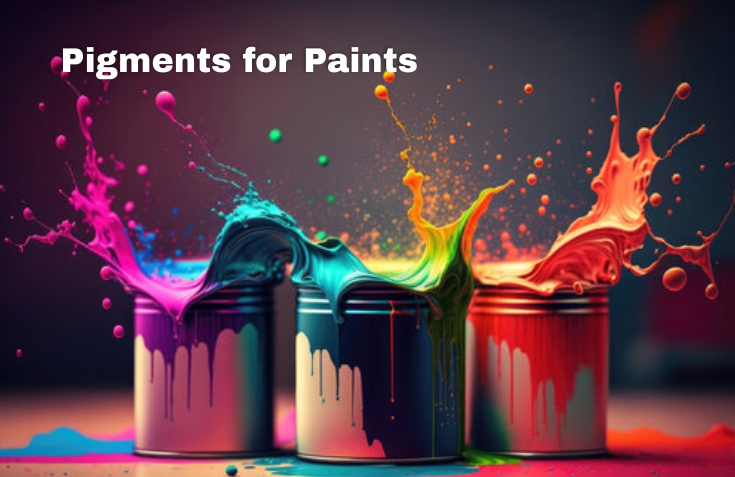
Paint Pigments Chemistry
Can we imagine the world without the bright shades of various colors? The colors make the world more attractive, fresh and aesthetic. Colors improve the appearance not only of clothes, homes, offices and food, but also cars, toys, beauty products, waxes, paints, etc. A correct color shade according to the application area can be a positive selling point for Product that makes it easily marketable.
Paints are made by dispersion of coloured pigments in a suitable medium. Pigments give colour and opacity to the paint. They also protect the paint from harsh environmental conditions such as heat and moisture. Some special pigments also give metallic finish to the paint. They offer economical paint options for commercial and industrial applications. We use such paints to decorate our homes, paint our cars and roads etc. They are also used to make colourful toys and make children’s’ play area more attractive with vibrant, eye catching slides, jungle gym, etc. The paint experts design paints which are durable, easy to apply, give a perfect shade and opacity. The paint making is a four step process which involves firstly the mixing of pigment and the medium, grinding to coat each pigment particle, adding of thinners and then tinting.
Paintings bring objects to life and make them attractive and attractive while protecting them from environmental hazards. The paints can be classified into decorative paints that lend aesthetic appeal to buildings and other elements and industrial coatings used in several manufacturing units.
Constituents of Paint
The major constituent of paint which imparts color to objects is pigments for paints. In addition to the pigment there are several components added to make the paint mixture such as binder, extender, solvent and certain additives. Each of them has a specific role to play in making the entire mixture effective. Binder or resin as it is referred to help to form a matrix and ensure that the pigment adheres to the substrate. There are three common binders used in the paint industry and they are acrylic resins, alkyd resins and epoxy resins. Acrylic resins are used in decorative paints as well as in industrial coatings and go in the form of solvent borne paints or water-borne emulsion paints. Alkyd resins are typically used in decorative gloss paints while epoxy resins are vital for industrial coatings.
The extender is nothing more than large pigment particles inserted to improve adhesion, save amount of binder and give more resistance to the film. The solvent can be water or an organic solvent that decreases the viscosity of the paint for a superior application. Additives are included to improve the characteristics of the dry film or the paint in its liquid form. Bactericides, dispersants, drying agents, silicones, thixotropic agents, anti-sedimentation agents, fungicides are just to name a few of them and are added individually to the qualities of the paint.
Formulation of Paint
Paints are formulated depending upon the intended application. The stages range from applying the primer, undercoat and then the specific finish like gloss, matt, abrasion resistance, anti-corrosiveness, heat resistance and so on. The broken individual particles of pigment powder are diffused in the binder; the process is known as ‘wetting out’. The required consistency is obtained by adding solvent in the desired quantities. The ingredients are then stirred well in huge containers in batches along with the necessary additives. Application methods range from dipping, roller, brush, spraying, flow coating, airless spraying, electrostatic spraying, powder coating, immersion, vacuum impregnation and hot spraying.
Characteristics of a Good Paint
White titanium oxide, an inorganic pigment accounts for almost 70% of the total pigments for paints. Among the organic pigments, anthraquinone and phthalocyanine derivatives account for a large percentage. The features of a good paint vary depending upon the application. Some of them include easiness in application, good flow, high opacity, heat and water resistance, anti-corrosiveness, scratch resistance, quick drying, flexibility, ease of cleaning and so on.
Environmental Chemistry of Dyes and Pigments
A greater awareness of the preservation of our environment has led to the elimination of lead compounds from paints used in the automotive industry and for decorative purposes. Specific industrial paints have significantly reduced their lead content. The increased use of water-based or emulsion paints, powder coatings or high-solids paints has become the solution. And industry leaders are paving the way for others!
Pigments for Paints and Coatings
Pigments for Plastics and Masterbatch
